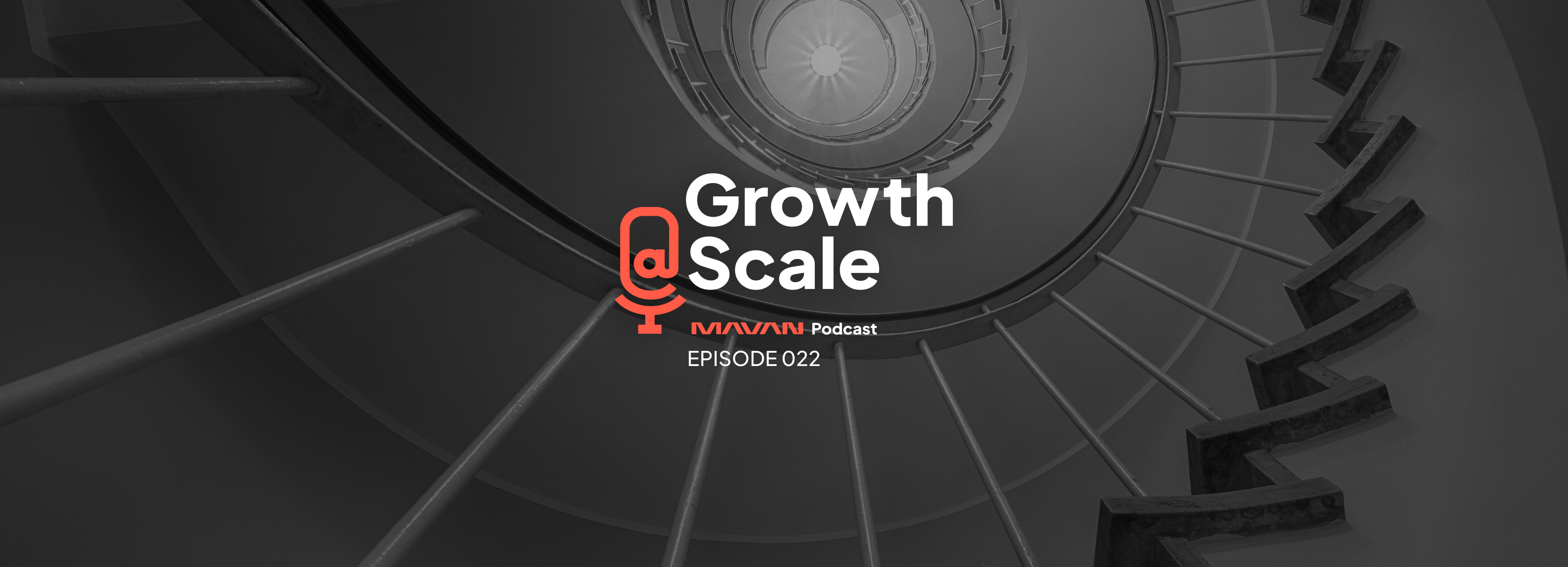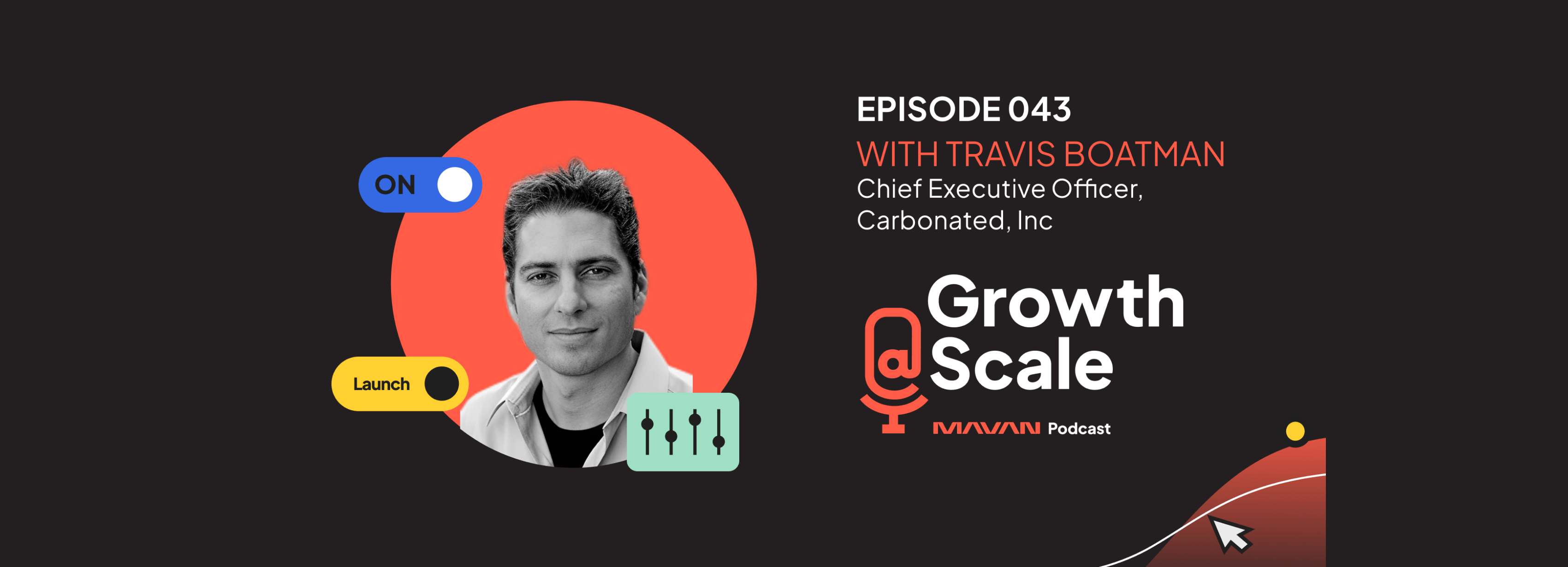Grist for the Creative Mill: How Data Can Drive Your Creative Production to New Heights
- Building a creative engine is a large cross-functional initiative that takes time. Start early and don’t neglect the work.
- Creative performance can drive the highest impact lever in any of your paid marketing campaigns.
- Develop a creative process to help you produce and experiment with new concepts and iterations at a rapid pace. More testing means more learning.
- Consider extending your internal creative team with Production Partners and Freelancers to help provide additional output and flexibility.
Finding creative concepts that perform well in campaigns is a long and often arduous task. Often it seems like there’s no end in sight, and failures come quickly and often. But remember, every large advertiser has built a robust creative engine, and this is how they run their business sustainably in a hyper-competitive marketplace where hundreds of advertisers compete for the same users.
Insight from my time at Digit can help you build a creative engine that will drive your company’s ad performance to the next level.
The Ads, They’re A-Changing
Today, there are two main levers that drive efficiency in a creative campaign: bids and creative. Historically, however, there were three: bids, creative, and targeting. Now, from Facebook to Google, micro-targeting is baked into the platform at the outset.
Even before the introduction of SKAdnetwork, channels were making major changes to their ad delivery optimization engine as privacy concerns rose. So the ability to hyper target users based on their interests and demographics has become inefficient over time. As a solution, channels began leaning more on the creative of our ads to help guide them to the right audiences.
This means that the easiest way to optimize your ad spend today is through your creative – not your bid. You want to be in the driver’s seat to prevent channels and algorithms from constantly determining your fate. It’s the easiest way to gain control since you decide which attributes you iterate to test, and the cheapest option when you have a creative engine that successfully yields more ads that are winners, allowing you to save on production costs and hours spent by your team.
A fully functioning engine produces more efficient creative, ultimately reducing your cost of acquisition and production in the long term.
Understand Your Audience & They’ll Understand You
When I worked at Digit we were facing a growth problem: we’d acquire users, but they’d quickly lose interest in the product. The old “leaky bucket” problem. The challenge we deduced was communicating Digit’s value proposition at the outset, to ensure users’ expectations matched their early onboarding experience.
Digit, a finance app that analyzes and manages your spending, is one of those tools that could be used in a million different ways. Our app was so simple and automatic that our challenge was an odd one. Ease of use left users feeling like a black box was managing their money. Our goal was to deliver a simple tool to help them budget, save, plan for retirement, invest, or reasonably spend their money (aka the Treat Yourself Fund!).
In order to talk to our entire prospective audience, we began a larger cross-functional initiative to create highly performant iterations that touched on multiple core value propositions and their respective audiences. To do this, we leaned heavily on our marketing to communicate with our users. We leveraged paid ads, landing pages, app store, onboarding, and more to help users understand how Digit could help them. This was all made possible by our creative processes. What we learned: in today’s competitive digital paid acquisition marketplace, the greatest way to optimize your team and chances for success is to build a data-driven creative production machine that delivers more ad home runs per at bats.

Create Ad Home Runs
Finding highly performant creative takes time. In fact, it typically takes hundreds of iterations and new concepts to find one major performant winner. It’s a bit like baseball. In Mookie Betts’s 2018 MVP season, Mookie hit 32 home runs in 614 plate appearances. That means Mookie only hit a home run 5% of the time! The same can be said for creative executions. Hitting home runs is hard and it takes a lot of attempts just to get a few but trust me… they’re worth it. Don’t waste your time sitting around and planning for months. Start by building a light creative production cadence and work up from there as you learn.
After investing over a year into our creative process at Digit, we got our team’s home run rate to increase every quarter. We scaled our ad spend from six figures to several million per month in a few months, all thanks to one creative concept we developed and identified as a home run. So, how did we do it?
It started by iterating and learning. We ran new creative concepts weekly and learned that it was important to keep what we tested different each week in order to keep learning. Testing things that were too similar made it difficult to understand what worked and what didn’t. Eventually we found that specific copy treatments and color schemes were working. We progressed from getting more hits to getting more home runs at a higher and more consistent rate, allowing us to expand our creative production process quickly as we scaled spend.

(Source)
The diagram above shows the creative process broken down into steps. Start slow and speed up as you fine-tune your operations to best fit your team. Our team went from producing one creative a week to producing a handful of net-new concepts and iterations each week paired with multiple copy variants across all of our channels, always going through the steps above.
Build a Winning Culture
A winning culture is key if you want your business to stay winning. But you can’t cultivate a winning culture without aligning your whole team to the same game plan. And that doesn’t happen overnight. At Digit, we had to build a culture focused on data, analytics, and inherent curiosity. Yes, that means even the designers and copywriters were involved with data and analytics! This idea was a bit jarring to some but it was important to guide our team and help them understand the results of our creative experiments by dissecting them like scientists. And it allowed everyone to fully understand and brainstorm innovative solutions to creative problems.
One of the biggest challenges we faced in cultivating our winning culture was finding a way to marry science and art. Our media buyers were using metrics (e.g. click-through rates, installs per 1000 impressions, etc.) to evaluate the success of each creative iteration, fairly and quickly, and our creatives had to understand them. To help, we started an internal “Growth Marketing University” course series with documentation led by our media buyers who served as “Professors”. In each course, we broke down various areas of the funnel to build a story around data. These courses identified the what, where, why, and how for every metric using real examples and use cases as if we were in a prospective customer’s shoes. We found that doing this robust educational series helped our team take actionable next steps in our creative production process when looking at data. For example, here’s how we might explain increases in install rates:
- Targeting – Users have some interest in your product and are aligned with the messaging in your creatives. If your creative is relevant to your targeting, you’d expect an increase in this metric. Any neutral to negative change indicates we are not delivering the right message to the right audience and should adjust accordingly.
- App Store Collateral (e.g. Icons, Screenshots, Ratings, Descriptions) – Users found the messaging and imagery supportive of what they were expecting. If you saw an ad to purchase new shoes but ended up in a store that only sold hats, would you stay and shop? You would turn right around and leave the store thus resulting in a drop off after I enter my store.
- Relevant Creatives – Users must see an ad that is relevant to the App Store page they landed on. Similar to the example above, we must ensure that the messaging and imagery we show to our prospective customers are consistent all throughout the user journey up until they make their purchase. Creatives touch every pivotal user journey moment and can have a material impact if we don’t deliver to the customer what we promised.
Once our creative designers understood where and why users would drop off, it was easier for them to successfully develop new creative ideas to tell our story. But we still needed to find an efficient way to work together. Our creative designers and media buyers had very different mindsets and ways of doing their work. Creative designers aren’t typically used to their work being judged based on data and numbers coming from what seems to be a black box of users. This concept of judgment can be new and daunting to most creatives. However, data doesn’t suggest whether their art is good or bad. It only talks about whether art is or isn’t aligned with the right audience.
We had to find common ground in the storytelling process of developing new ideas. So, we held joint education sessions that explained the full end-to-end process for both teams. Each team was asked to come prepared with its processes, goals, and challenges. We put everything on one whiteboard together to identify similarities and differences, and then merged our processes and goals into one. There was a lot of overlap that we weren’t even aware of. For example, both teams had their own messaging and copy repository that informed what they used in the final assets. By merging these processes, we trimmed down inefficient areas and built a strong feedback loop that helped both teams work together more closely.
As we continued to build out our team and culture, one thing became very clear. We’re all fixated on the same primary goal. To achieve it successfully, we needed to maintain strong communication to share what we observe and learn from each other. We knew that our solution wasn’t perfect but had a mutual understanding that we’d improve it together over time in a joint partnership.
But with these successes came a new issue (mind you, a good one): as we began to iterate and produce more successful creative for ads: we reached our bandwidth limits. And we knew we needed more person-power – we needed a deeper bench.
A Deep Creative Bench Will Take Your Further
At Digit, the speed with which we were producing and testing creatives needed help so that we could scale. To support our needs, we set up a three-legged stool for production that unblocked our production capacity while keeping us flexible. Our team needed the ability to quickly allocate resources to the best performing creative concepts so we could double down on our winners for new iterations and adapt these creatives to all of our channels. This meant that we needed all three branches to be functioning in order to provide a stable output of new creative assets for the team. For us, these three branches were: internal creative teams, production partners, and freelancers. As we built out these independent functions, we learned that a strict schedule of production is not realistic. Creative needs change dramatically based on your campaign performance, and so you have to be scientific and agile all at the same time to balance a high-velocity production pipeline. Each branch—or leg of your stool—while independent, must be aligned constantly to bring balance and stability. Here’s how we used these teams:
Internal Creative Team
For Digit it was critical to have our creative concepts be led by an internal member of our team. It was important that we choose someone who knew our product and audience the best. I’d advise that you keep this ownership and responsibility in-house but have your chosen person integrated to support your production partners and freelancers.
Our most senior designer and creative director led all concepting and storyboarding for new ideas while chiming in on iterations. They were responsible for thinking outside the box and bringing fresh ideas to the table with a strong vision and clarity of who our audience was.
Our senior designer and creative director oversaw an internal team of creative directors, designers, animators, video editors, and copywriters. We had a full-fledged creative team that allowed each individual to specialize and focus on their efforts to produce high-quality creatives. The creative team would take the leading hypotheses and design prompts for each initiative and deliver several new concepts and iterations to the team. Here’s an example of team structure for a creative prompt:
- Designer – Builds visual iterations and interpretations utilizing the concept and storyboards from the creative director.
- Brand Designer – Works with Design to ensure tone and voice matches the brand.
- Copywriter – Provides a team with taglines and hooks to embed.
- Media Buyer – Dedicates who pairs with a designer to test creatives.
In some smaller teams, you might find that the designer plays the role of the designer, copywriter, and even director. While this can work out well temporarily, it spreads you thin over time and often leads to bottlenecks.
The primary challenge for our team was finding inspiration. Being so deep into the details and only working with the core team can often lead to tunnel vision. We found that it was important for our team to find inspiration by working with third-party teams who would push us creatively.
Production Partners
Production partners can be thought of as an extra internal creative team and can have a similar structure to your internal creative team. They have multiple resources and usually a very similar set up that allows them to specialize in various areas to output high-quality creatives quickly.
With that said, the primary challenge we found in working with production partners is that they simply didn’t know our product and audience well enough. It was helpful to spend the extra time to go through our research and data with our partners to ensure they were equipped with the right information and ideas to be successful. As a result, this process was managed by our creative director to help ensure that there was a cohesive strategy and message across all creative output.
My recommendation is to find and prioritize these partners based on your highest needs. Run trials by creating the first few concepts together to test out working style and prioritization. Go through the motions to understand if these partners will work for you. Ultimately, what you’ll find is that you’re going to need several production partners to have full coverage of your creative needs across channels and styles. Don’t be shy about working with lots of smart and clever creative partners.
Freelancers
While a freelancer doesn’t have a robust team or set of resources like a production partner, the benefits of working with them are specialization and flexibility. We found it best to use freelancers for very specific needs like 3D rendering, resizing, automation, etc.
We always kept a great relationship with a team of off-shore freelancers that could be brought on for short or long-term projects. Freelancers gave us a lot of flexibility from both a financial and resourcing perspective. Freelancers were our version of a utility player. They give your team the flexibility to rotate others on different tasks and projects that best suit them to give you the most opportunities to build a well-rounded creative team at any given time.
As amazing as freelancers are, the primary challenge here is that they have their own motivations whether it be longer projects, different types of work, more money, etc. As a result, freelancers are not always available and can roll off of your team after a project finishes. They are not contractually obligated to make themselves available, so you’ll need to carefully manage your creative production pipelines and needs while also having multiple freelancers who can come in and fill gaps when needed.
Invest In Your Creative Engine
Digit became successful because we invested carefully in the core areas listed above. There was mutual understanding across the entire company that a data-driven creative production machine was a priority that benefited all teams. With the foundation in place, we were able to get out there and learn rapidly.
More swings at the plate meant more data – hits or not. More data meant more opportunities for us to learn and carry over new hypotheses. Creative testing is a numbers game that requires relentless experimentation and learning.
It should be noted that you need more than home runs to be successful, long term. More plate appearances lead to more hits which lead to additional insights, which lead to more home runs over time.
We analyzed our strikeouts and losing creatives arguably more thoroughly than we did our winners in hopes of understanding why they didn’t resonate with our users. Just like any truly great modern sports manager, we studied analytics, marrying science and art.
Creative process and experimentation are critical components in scaling growth for any business. The ad ecosystem has shifted to a world where ad channels can target users more precisely and efficiently through their ad delivery optimization engine. Ad creative now drives the algorithms more than targeting, based upon which person is most likely to engage. We’ll talk a bit more about this in the next post, coming soon!
Book a complimentary consultation with one of our expertsto learn how MAVAN can help your business grow.
Want more growth insights?
Related Content
Using a consistent brand to drive sustainable growth
January 29, 2024
Brand messaging, when harmonized with a brand's character, significantly boosts marketing efficacy and customer…
Creativity, ethics, transparency, and facts in the world of ChatGPT
July 13, 2023
AI isn't the answer for creativity, research, & SEO. You need processes, ethics, transparency, and fact checking to use…
Growth@Scale – Episode 43 – Travis Boatman – Transcript
April 29, 2025



